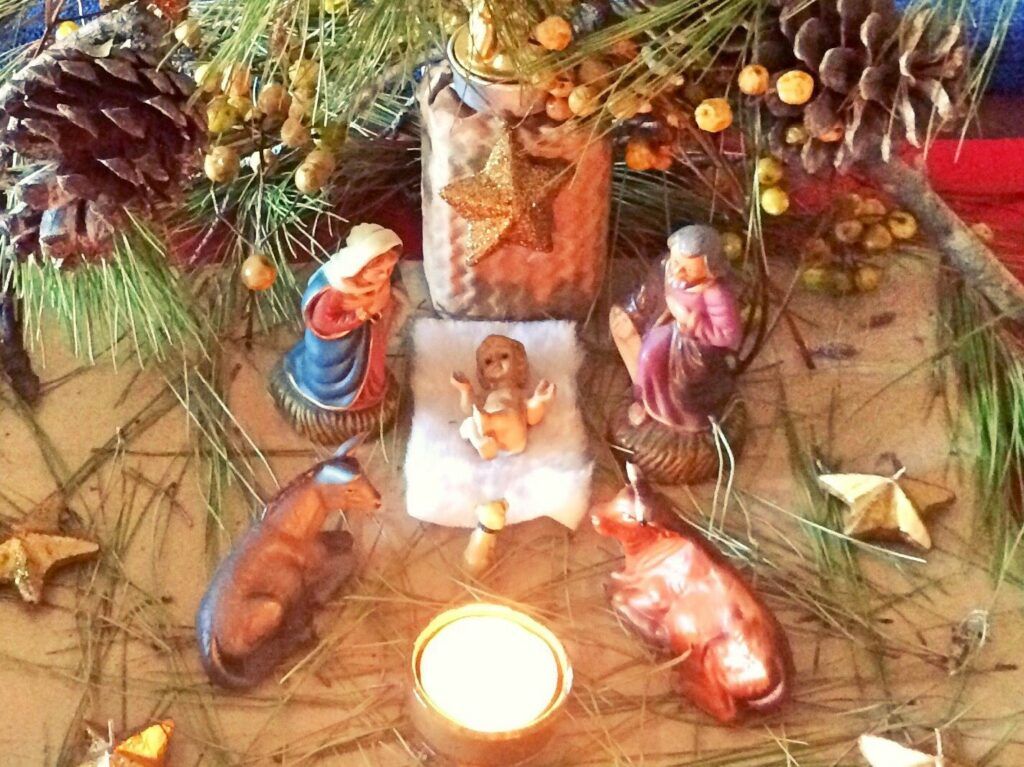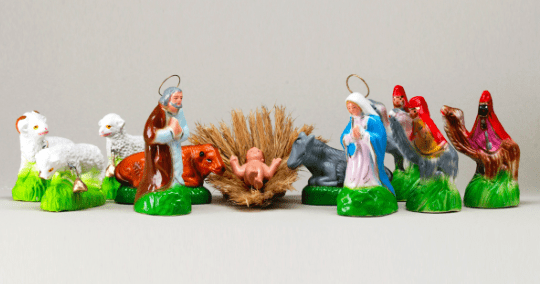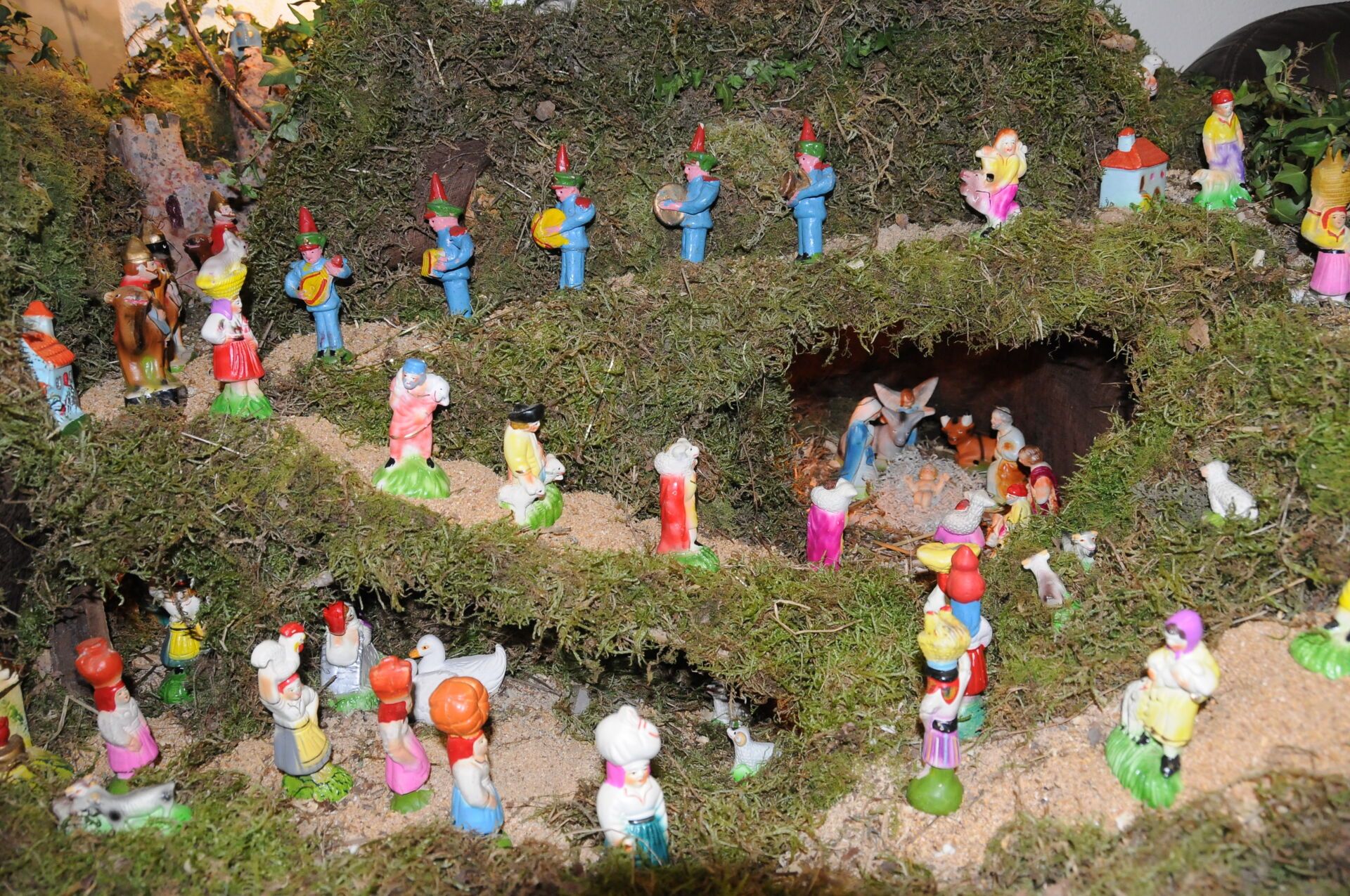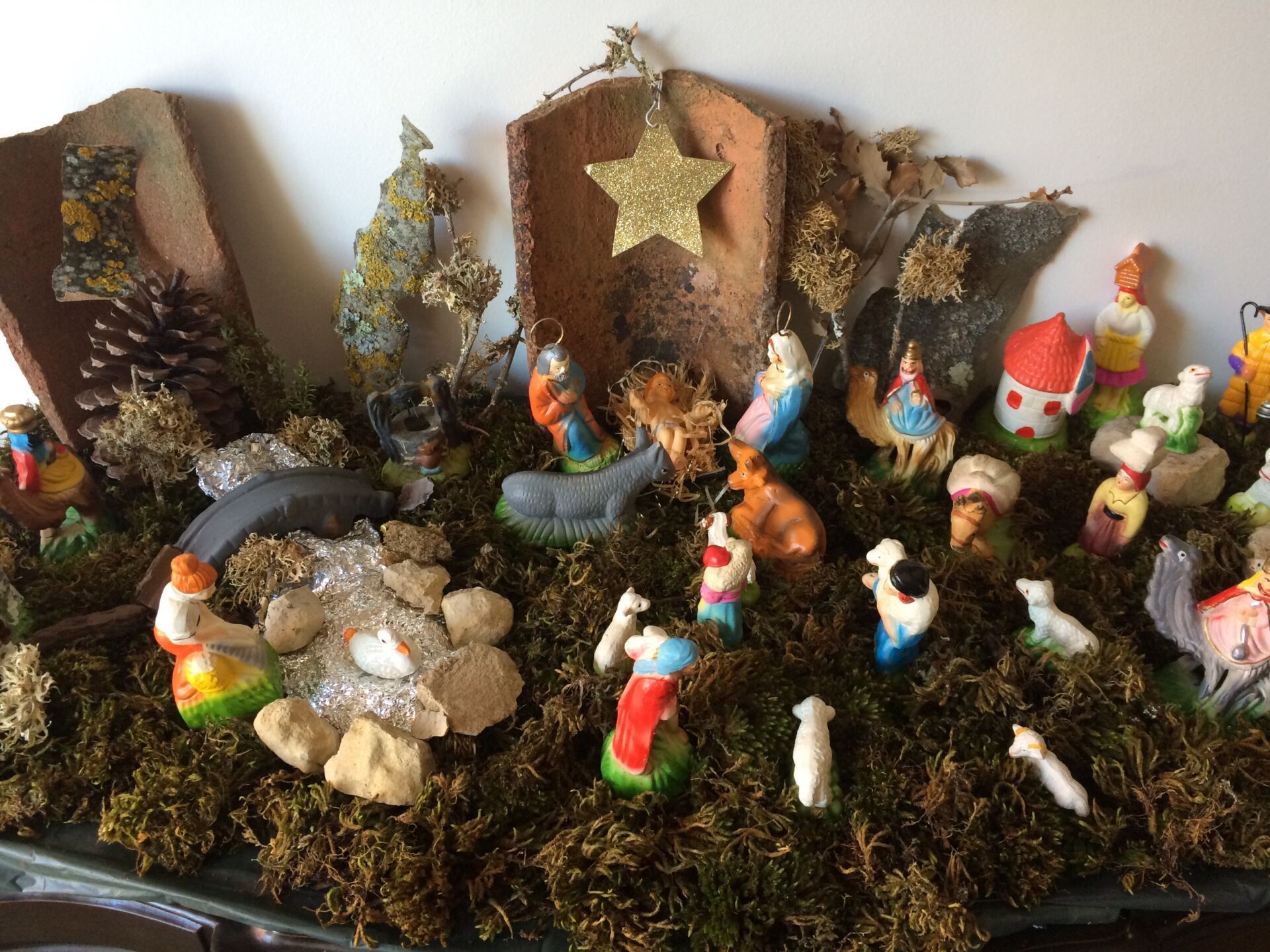Now that the Christmas season has officially started, I can finally start blogging about my favorite holiday! One tell-tale sign that Christmas is here is that you start seeing nativity scenes (presépios) in malls, town squares and people’s homes. In Portugal, these scenes tend to be very traditional and the pieces are passed down from generation to generation. But there are two surprising features of Portuguese nativity scenes that make them different to any others in the world.

The making of a Portuguese nativity scene is in itself a process. You have to gather moss, pieces of bark, stones, etc to create the setting and backdrop. You then have to do some creative space planning and figure out where you’re going to place the figurines. This brings us to the first unique feature: the figurines!

The rustic, hand-painted, ceramic figurines can be divided into two types: the religious figures and the cultural figures. The religious figures are the usual holy family, the three kings, the shepherds and their sheep, and the ox and donkey. So far, pretty standard. But then we go and add some completely anachronistic characters to the whole thing (the cultural figures). In a Portuguese nativity scene, you’ll often see a woman carrying a large jug, women carrying goods on their heads, a miller and his windmill, and even a marching band! (Yes, you read that correctly.) In my house, we even have a bridge crossing a little stream and some ducks. All these brightly-colored characters are representative traditional Portuguese life. While you’re busy thinking how random all this sounds (“what are all those people doing there?!”), Portuguese people are actually so accustomed to it, we don’t even question it.

The other interesting aspect of Portuguese nativity scenes is really sweet: some people leave the manger empty until after Midnight Mass (Missa do Galo) – only then are you supposed to add baby Jesus to the scene because that’s when he was born.
There is another type of nativity scene in Portugal: a baroque, terracotta and cork style that is absolutely stunning. It is more detailed and sophisticated than the style discussed here. When in Portugal, go to Basílica da Estrela to see a gorgeous 500-piece nativity scene which is on permanent display. If Lisbon is too far from you, make your way over to Penela, which has one of the best nativity scenes in the country (only at Christmas time).
On January 6th, on the Kings Day (Dia de Reis), we take down all the Christmas decorations including the nativity scene. See you in 11 months, cute little ceramic figurines!



